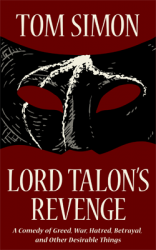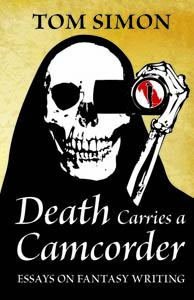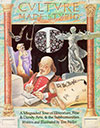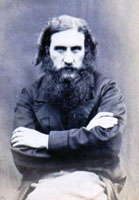 |
 |
 |
 |
| August 2012 | December 2012 | February 2013 | August 2014 |
Archives for January 2013
Available from Bondwine Books
‘La libertà di pensiero’ (‘Freedom of Thought’), by Trilussa
Un gatto bianco, ch’era presidente
der circolo der libbero pensiero,
senti che er gatto nero,
libbero pensatore come lui,
je faceva la critica
riguardo a la politica
ch’era contraria a li principi sui.
–Giacchè nun badi a li fattacci tui,
–je disse er gatto bianco inviperito–
rassegnerai le proprie dimissioni
e uscirai dalle file der partito:
chè qui la poi pensa’ libberamente
come te pare a te, ma a condizzione
che t’associ a l’idee der presidente
e a le proposte della commissione!
–E’ vero, ho torto, ho aggito malamente. . . .–
rispose er gatto nero.
E pe’ resta’ ner libbero pensiero
da quella vorta nun penso’ piu’ gnente.—Trilussa
A white cat, who had been made the chair-cat
Of an Association for the Freedom of Thought,
Got news that a black cat,
A member of the same Association,
Would criticize his views
For he did not agree
With the white cat’s political principles.
–Since you won’t mind your own bloody business
– said the white cat to the black one in a rage –
You will resign – out of your own free will –
And leave our Party ranks for good:
’cause here you can think freely and as you please
So long as you accept the chair-cat’s views
And the Political Commitee’s proposals!
–It’s true, I’m wrong, what I’ve done wasn’t right . . .–
the black cat answered;
And to be allowed to remain Freethinker
From then on he never thought anything again.
[Translation supplied by Fabio Paolo Barbieri]
‘Beowulf Meets Godsylla’, by Tom Weller
I’ve been reading Beowulf in the original, and as you can imagine, having a wee bit of trouble with the language. Still, the stirring descriptions of combat and the thunderous roll of the alliterative metre fully justify the poem’s reputation as the fountainhead of English literature:
Meanehwæl, baccat meaddehæle, monstær lurccen;
Fulle few too many drincce, hie luccen for fyht.
Ðen Hreorfneorhtðhwr, son of Hrwærowþheororthwl,
Æsccen æwful jeork to steop outsyd.
Þhud! Bashe! Crasch! Beoom! Ðe bigge gye
Eallum his bon brak, byt his nose offe;
Wicced Godsylla wæld on his asse.
Monstær moppe fleor wyþ eallum men in hælle.
Beowulf in bacceroome fonecall bamaccen wæs;
Hearen sond of ruccus sæd, “Hwæt ðe helle?”
Graben sheold strang ond swich-blæd scharp
Stond feorth to fyht ðe grimlic foe.
“Me,” Godsylla sæd, “mac ðe minsemete.”
Heoro cwyc geten heold wiþ fæmed half-nelson
Ond flyng him lic frisbe bac to fen
Beowulf belly up to meaddehæle bar,
Sæd, “Ne foe beaten mie færsom cung-fu.”
Eorderen cocca-cohla yce-coeld, ðe reol þyng.—Tom Weller, Cvltvre Made Stvpid
But somehow methinks Tom Weller, þætte rihte ealde Englisce scop, could have spun out England’s national epic to more than eighteen lines. Still, not bad for a culture that only emerged from the barbarous night of the Dark Ages in 1987, when Þacere ruled in Heorot.
Both Cvltvre Made Stvpid and its companion volume, Science Made Stupid, are unfortunately out of print, but they are now available as free downloads — with the author’s permission! Find them both here:
http://www.chrispennello.com/tweller/
On semicolons
Here is a lesson in creative writing. First rule: Do not use semicolons. They are transvestite hermaphrodites representing absolutely nothing. All they do is show you’ve been to college.
—Kurt Vonnegut
Let’s take this bit by bit:
Here is a lesson in creative writing.
Asserted but not proved.
First rule: Do not use semicolons.
Nobody but Vonnegut ever heard of this ‘rule’, and most notable English authors of the last few centuries have used semicolons freely. I conclude therefore that it is not a rule, but merely an expression of Vonnegut’s wishful thinking. It is true that George Orwell wrote Coming Up For Air without using semicolons, as an experiment; but he went straight back to using semicolons in all his subsequent books. I should say that counted as evidence that it is not a rule.
They are transvestite hermaphrodites representing absolutely nothing.
On the contrary, they represent the same thing as the Greek hypostigme, which was invented over 2,000 years ago. In marking up texts for public reading, as an aide-memoire to the readers, they used to put dots in between words to indicate places where one should pause. There were three of these marks originally:
The stigme teleia or ‘final dot’ served the same function as our full stop, but it was even with the tops of the letters instead of the baseline. In reading aloud, it indicated a relatively long pause.
The stigme mese or ‘middle dot’ was halfway up the line, about where we would put a hyphen, and represented a place where you could pause long enough to take a breath; it corresponded roughly to our comma.
The hypostigme or ‘under-dot’ represented a middle-sized pause, longer than a stigme mese but shorter than a stigme teleia, to show that the reader should pause while the audience took in the meaning of the preceding clause, but that the sentence was not yet over.
Note that these marks were invented long before the question mark, colon, or exclamation mark, which presumably Vonnegut thinks are important enough to keep. If the Greeks found a need for all three, and modern punctuation includes all three, I think it’s safe to say that there really is a function for all three.
All they do is show you’ve been to college.
Pish-tosh. I began using semicolons when I was about ten, and never encountered anybody in college who said anything about them one way or the other.
‘The Fantastic Imagination’, by George MacDonald
From A Dish of Orts: Chiefly papers on the imagination, and on Shakespere (Enlarged edition), 1895.
That we have in English no word corresponding to the German Mährchen, drives us to use the word Fairytale, regardless of the fact that the tale may have nothing to do with any sort of fairy. The old use of the word Fairy, by Spenser at least, might, however, well be adduced, were justification or excuse necessary where need must.
Were I asked, what is a fairytale? I should reply, Read Undine: that is a fairytale; then read this and that as well, and you will see what is a fairytale. Were I further begged to describe the fairytale, or define what it is, I would make answer, that I should as soon think of describing the abstract human face, or stating what must go to constitute a human being. A fairytale is just a fairytale, as a face is just a face; and of all fairytales I know, I think Undine the most beautiful.
Many a man, however, who would not attempt to define a man, might venture to say something as to what a man ought to be: even so much I will not in this place venture with regard to the fairytale, for my long past work in that kind might but poorly instance or illustrate my now more matured judgment. I will but say some things helpful to the reading, in right-minded fashion, of such fairytales as I would wish to write, or care to read. [Read more…]
Welcome, and excuse the dust—
For the past seven years, my blog, The Superversive, has been hosted on LiveJournal. I’ll be continuing to maintain it there, but as of today (2 January 2013) I’ve begun the process of migrating over to WordPress on my own domain.
It will take some time to get the conversion done and work the kinks out. For the time being, I plan to post all new blog entries both here and on LJ. Eventually I may drop LJ altogether, or make that edition of the blog inactive. Meanwhile, I invite you to feel at home in either location. Have a seat and put your feet up, because it may not be safe to put them down!









Recent Comments